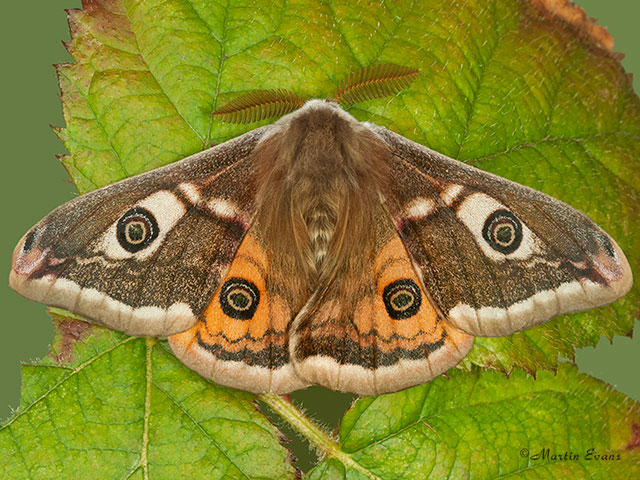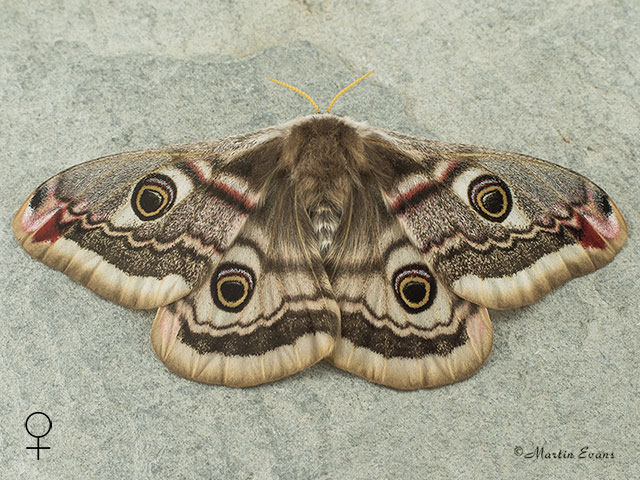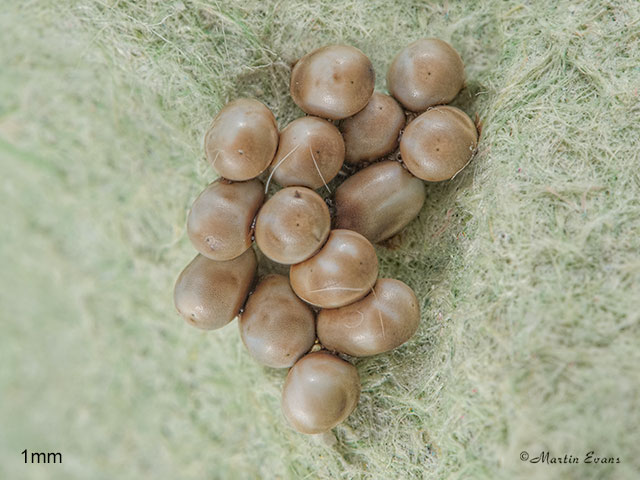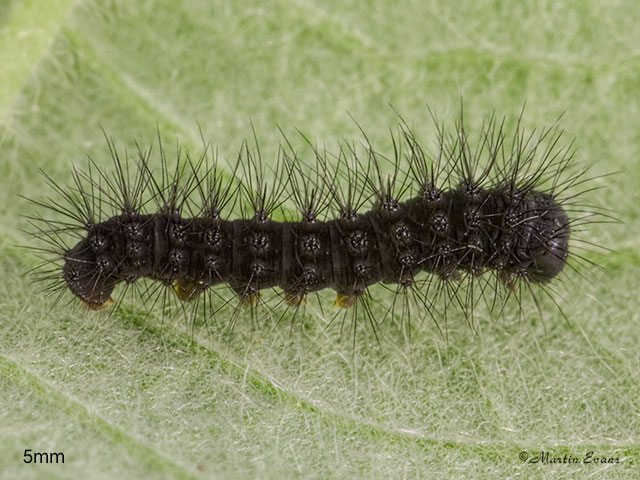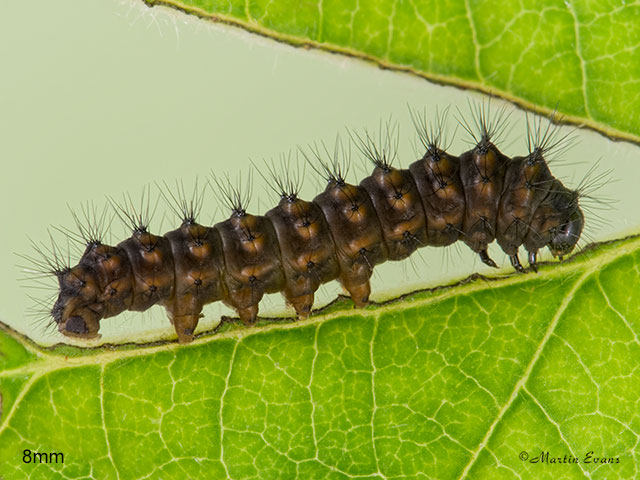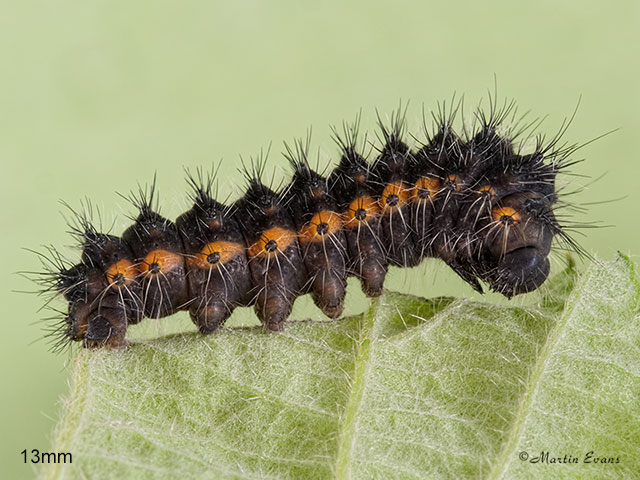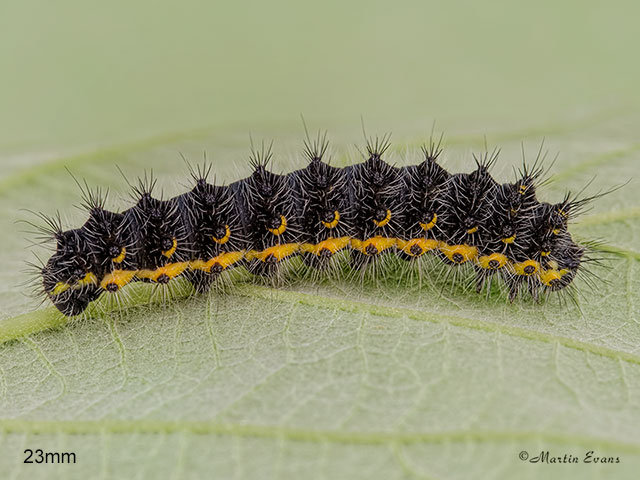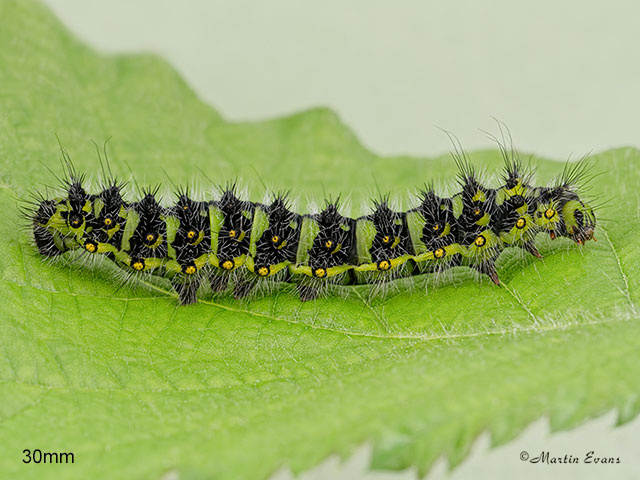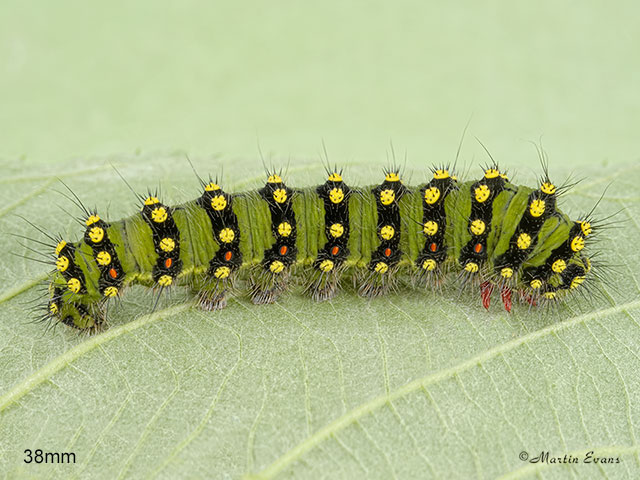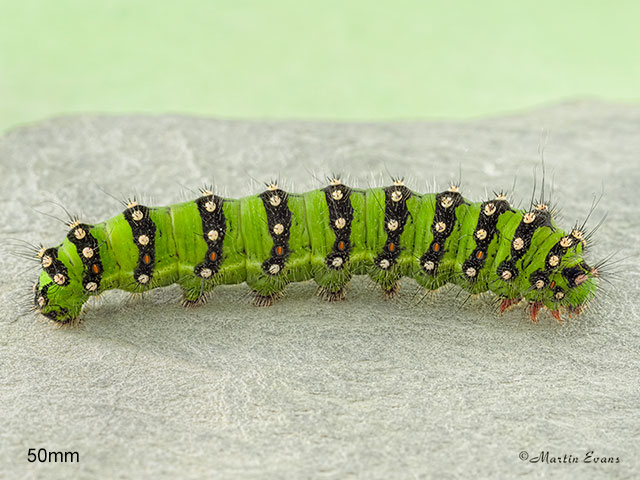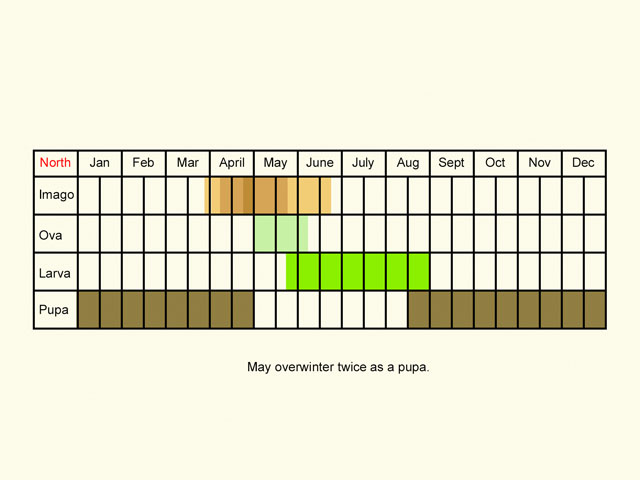Saturniidae
68.001 Emperor Saturnia pavonia (Linnaeus, 1758)
Common
Similar species:
Forewing: M 27 to 32mm, F 35 to 41mm
Habitats: Moorland, heathland, bogs, fens, woodland rides, scrub and stable coastal sand-dunes.
Habits: The male flies rapidly in sunshine looking for a female, especially in the late afternoon. Although the female can sometimes be found resting on Heather during the day, it is more usually recorded at light as it flies from dusk and comes to light, usually early in the evening.
Foodplant: The larva feeds on Heather, sallows, Bramble, Hawthorn, Alder Buckthorn, Meadowsweet, Blackthorn, birches and Hazel. Many others foodplants are accepted in captivity. This species is gregarious in the early stages. It pupates in a teardrop shaped cocoon usually low down in the vegetation, but occasionally higher. The pupa sometimes overwinters twice.
